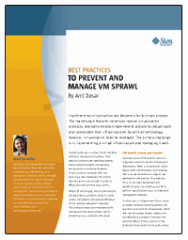It’s still a few months away, but I’ll be presenting at two storage-related presentations in the Virtualization and Cloud track at The Experts Conference (TEC) 2012 in San Diego, CA. Below are the abstracts. For more information about the conference, please visit the TEC 2012 Conference web site.

Storage Improvements in Windows Server 8 / Hyper-V 3.0
Virtualization architects and administrators have long sought quicker, simpler and more cost effective ways to scale and manage storage in their data centers. Microsoft has made many significant improvements in the architecture and storage features of Hyper-V 3.0 and the Windows Server 8 platform. Examples include support for SMB-based virtual disks, management UI improvements, network stack improvements, Hyper-V Replicas, NTFS reliability improvements, incremental VHD backups, storage de-duplication, offloaded data transfer, SMB protocol improvements, and Storage Spaces. These features can help improve storage management for many different types of virtualization deployments and can help bring the idea of cloud-based automation closer to reality.
This session will focus on technical details and demonstrations of new features in the Windows Server 8 platform and in Hyper-V 3.0. The focus will be on practical suggestions for how and when the new features should be used to reduce costs, simplify administration, and increase performance.
Designing Storage for Virtual Environments
One of the most common issues related to virtual infrastructure design is related to planning for and managing the storage environment. Successful SAN, NAS, and local storage deployments require the provisioning of highly-reliable, high-performance, cost-effective solutions to meet business and technical needs. The challenge for IT is in consolidating and optimizing infrastructures while staying within budgets. The primary concerns – including storage capacity, performance, and reliability – can drive the success or failure of virtualized deployments.
This presentation begins with recommendations for designing a storage environment based on requirements, starting with a solid understanding of application workload characteristics. Strategies for collecting storage statistics through historical and real-time performance monitoring can provide valuable insight into real requirements. Based on this data, IT departments can compare different storage approaches, including centralized network-based storage, and cloud-based options. Important features to consider include file- and block-level de-duplication, thin provisioning, high-availability, clustering, and disaster recovery. Attendees will learn methods by which they can best plan for, implement, manage, and monitor storage for virtualization in their own environments.
 On December 9th, 2014, I’ll be presenting a free online webinar titled, Windows Server Enterprise Storage and Networking Features. Here’s a quick overview of the topic:
On December 9th, 2014, I’ll be presenting a free online webinar titled, Windows Server Enterprise Storage and Networking Features. Here’s a quick overview of the topic:











